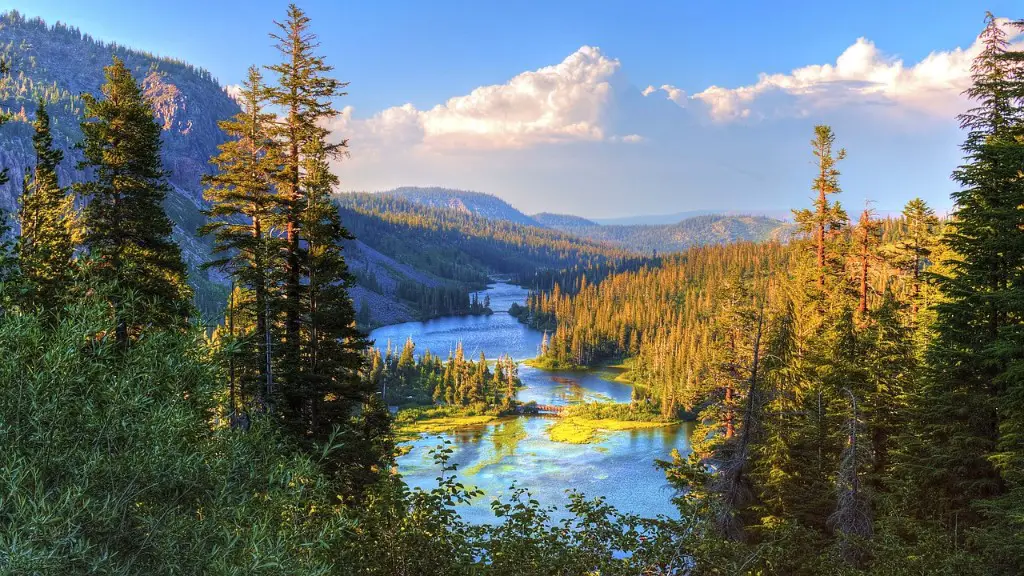The Nile River is one of the world’s most iconic rivers, stretching for over 6,700 kilometers and winding its way through 10 countries. It is steeped in history and legends, and tied to many civilisations, religions, and cultures. It is also considered to be the longest river in the world. Many people ask, can you swim in the Nile River?
The short answer is yes – in most parts of the Nile River you can swim, as long as you are careful with the currents and the changing landscapes. But it is important to remember that it is an old river, and like other rivers in the world, it is liable to contamination and pollution. The water may contain parasites and bacteria, so it is essential for swimmers to take proper safety precautions.
Before taking the plunge, it’s wise to become aware of the risks and to know how to stay safe when swimming in the Nile River. Factors such as strong currents, water pollution and pollution from nearby industries can all affect the quality of the water and make swimming dangerous. It is also important to be mindful of local boats and other water-related activities.
The best way to ensure safety when swimming in the Nile River is to rely on the advice of local experts and to enquire about the latest water quality reports. Some areas of the river may be faster flowing and contain strong undercurrents. It is important to check the water depth before swimming and to take precautions if necessary. It is also important to wear a life jacket and be mindful of any debris suspended in the water.
Pollution has caused a significant decline in the number of fish species in the river, affecting fishing and other related activities. Sewage runoff and other contaminants have seriously contaminated the waters of the Nile, and caused long-term health issues for many people living near the river. However, in recent years, efforts have been made by local and international organisations to identify and manage sources of pollution, leading to some improvements in the water quality.
In addition to safety considerations and water quality, there are also other factors to consider before taking a dip in the Nile. Its wide estuary and vast delta, both provide a wealth of bird life, and there are numerous species to be found. Along the banks of the river, there are also many species of wildlife, including the endangered hippopotamus, whose population is fighting to survive in the wild.
In conclusion, while it is possible to swim in the Nile River, it is important to take safety precautions and to stay informed about the latest water quality reports. With the right preparation and respect for local laws and regulations, a rewarding experience can be had swimming in the majestic river.
Local Perspective on Swimming in the Nile
The people living near the Nile River have long been connected to the river and many rely on the river for food, transport, and other daily needs. Many who live in the surrounding villages have long traditions of fishing and irrigation, and some have been swimming in the Nile for years. Local residents typically view swimming as a chance to be close to nature and to experience its power first hand. For many, swimming in the Nile is a relaxing and enjoyable activity.
However, many of these villages lack access to clean and safe water and sanitation, and this contributes to the river’s contamination. More needs to be done to address the issue of water pollution, to ensure that the river can be enjoyed safely by locals and visitors alike. Local education initiatives are one way to help raise awareness about the benefits of caring for the river and the dangers of water pollution.
Government action is also important in protecting the water quality of the Nile River and reducing the risks of swimming in it. Across Egypt, government-funded initiatives have been launched to tackle the issue of water contamination and to protect the river from industrial pollution. There are also plans to invest in water infrastructure to improve water quality and reduce the risks of swimming in the river.
The efforts of local communities, in many cases, have led the way in protecting the river and its inhabitants. Education initiatives, such as making resources available to local communities – from health advice and warning signs to hygiene protocols – are helping to reduce the risks of swimming in the Nile.
Conservation and Preservation
The Nile and its delta are integral to the lives of many Egyptians, but their fragile balance is under threat due to human activities and climate change. Major threats such as desertification, soil erosion, and persistent water pollution are increasingly contributing to the decline of biodiversity in the region.
This is why the protection and preservation of the Nile is now a top priority for the Egyptian government and authorities, who are looking to enforce environmental legislation and implement sustainable environmental management. In recent years, several projects have been introduced to support conservation efforts, including measures such as hydropower limits and water diversion initiatives.
At the same time, international organizations are also working to improve conditions for wildlife and for those living near the river. In particular, programs such as the National Biodiversity Strategy and Action Plan have enabled stakeholders from several different organizations to come together and develop conservation plans for the future.
As the protection and preservation of the Nile River is of utmost importance, it is essential that those engaging inwater sports do so responsibly to ensure the sustainability of the river and its accompanying wildlife.
Tourists at the Nile
The Nile River is a popular destination for tourists and has long been a site of international travel and exploration. For centuries, travelers from far and wide have come to enjoy the beauty and fall in love with the culture of the river.
Today, the number of tourists visiting the Nile is steadily increasing, and with it, there is an increasing demand from tourists to be allowed to swim in the river. While there are certainly risks associated with swimming in the Nile, the majority of tourists take adequate safety precautions and are aware ofthe important cultural and environmental considerations.
What’s more, tourists swimming in the river can be positive for local businesses, as many travelers opt to stay in the local area and opt to purchase products and services from nearby vendors. Tourists are also advocates for the protection and conservation of the river, and are often vocal about their experiences and the importance of saving the river.
Ultimately, the decision to swim in the Nile River is a personal one and should be taken with caution. But those who choose to do so safely can enjoy a truly rewarding experience.
Impact of Swimming on the Nile
Swimming in the Nile River has both positive and negative impacts. It can be harmful if done in an irresponsible manner as it can contribute to erosion, water pollution, and hazards for local wildlife. Careless swimmers can potentially introduce pollutants such as sunscreen, lotions, and oils into the river, which can be detrimental for the local ecologies and wildlife.
Nevertheless, the potential effects of people swimming in the river can also be seen as beneficial, as it encourages community engagement and communication. By engaging in recreational activities, people are more likely to take an active role in conserving the river and its resources. Swimming in the Nile helps to build an appreciation of the river as a natural resource and helps to ensure that it is preserved and protected.
Finally, swimming in the river also offers a unique and rewarding experience that allows visitors to truly experience the local culture and atmosphere in a special way. By immersing oneself in the Nile, people can get to know the locals and gain an understanding of the unique cultural andnatural elements that the river has to offer.





